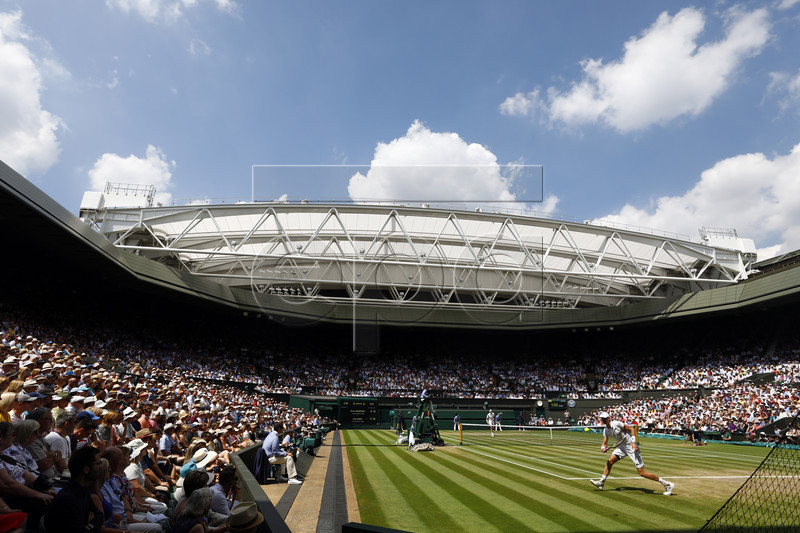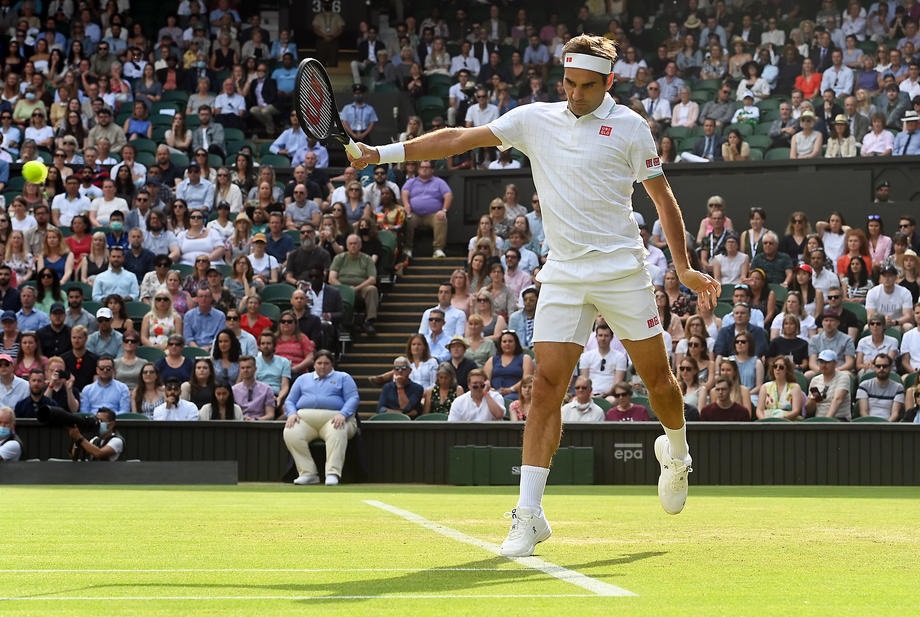- Australian Open Draws and Order Of Play for Thursday, January 23, 2025
- Ricky’s pick for the Australian Open quarterfinal between Sinner and De Minaur
- Australian Open Draws and Order Of Play for Wednesday, January 22, 2025
- Goran Ivanisevic Is No Longer Coaching Elena Rybakina
- Ricky’s pick for the Australian Open quarterfinal between Alcaraz and Djokovic
- Australian Open Draws and Order Of Play for Tuesday, January 21, 2025
- Tennis Report From Australian Open: Novak Making A Run by Alix Ramsay
- Australian Open Draws and Order Of Play for Monday, January 20, 2025
- Five-set frenzy continues in third round of Australian Open
- Australian Open Draws and Order Of Play for Sunday, January 19, 2025
- Pam Shriver’s Car Containing Grand Slam Trophies Stolen in California
- FREE GIFT WITH PURCHASE Of Incrediwear Supports
- Australian Open Tennis 2025 by Alix Ramsay
- Ricky’s picks for Day 6 of the Australian Open, including Djokovic vs. Machac
- Australian Open Draws and Order Of Play for Friday, January 17, 2025
Tennis • Is Time The Enemy? Yes! Ask Anyone At Wimbledon Today
- Updated: July 13, 2018

Kevin Anderson of South Africa returns to John Isner of the US in their semi final match during the Wimbledon Championships at the All England Lawn Tennis Club, in London, Britain, 13 July 2018. EPA-EFE/NIC BOTHMA
Editors note: Ed Billet wrote this a few months ago. We knew it was a great piece on the first read. Eddie hit the nail on the head. Tennis must limit the play. You have to have a deep love to sit and watch a match that lasted over 6 hours. Yes, John Marathon Man Isner lost to Kevin Anderson!!! 6-7, 7-6, 7-6, 4-6, 24-26.
By Edward Billett For 10sBalls
“What time is the match going to finish?”, my friend asks me as we settle down to watch the Wimbledon Men’s championship match. “As long as it takes”, I reply, amused, and slightly taken aback. “That’s one of the things that makes tennis unique. The match doesn’t end until the final point is over.”
My friend looks back at me with a mixture of exasperation and alarm, an expression akin to that of a man who has just found out that his relaxed Sunday afternoon has transformed into a one-way ticket to eternal suffering.
He doesn’t get it, I tell myself. The fact that tennis is relatively free from time constraints is surely one of its endearing qualities – a sport that was conceived without thought for the needs of broadcasters or sponsors. This wonderfully uncompromising format makes the sport charming and unique for fans like me: the match is simply over when it’s over.
Yet, it’s not just my friend who seems to have a problem with this issue of time, but also the governing body for the men’s side of the game, the ATP.
The ATP, along with the WTA and ITF, recognise the need for evolution in an increasingly competitive global sports market. Tennis’s track record in recent years has shown it to be relatively progressive, with the introduction of equal prize money for male and female athletes, line-calling technology (Hawkeye), as well as trialling on court coaching for the first time on the WTA tour.
It has been evident over the last few years, however, that the ATP believes the future of the sport lies in that age-old adage, less is more. Shorter matches, less time between points, and a truncated scoring system are all ideas which are being implemented in an effort to make tennis more digestible to your average sports viewer.
Nowhere was this more evident than during last year’s inaugural ATP #NextGen Finals, in which the ATP introduced a slew of new rules designed to speed up on-court proceedings, alongside other changes such as coaching via headset and a crowd which is free to move during play.
But let’s focus on the changes designed to shorten the matches: no service lets, no ads, first to four games per set and shot clocks timing players between points.
Firstly, we have no more service lets, which, while it has its uses in US collegiate tennis, is a bizarre and pointless rule change for the pro circuit. In keeping clipped-net serves in play, the idea is to save time by removing the need for the player to serve again. In practice, the time saved is negligible – as little as 99 to 128 seconds per match for the WTA and ATP tours respectively. In Roger Federer and Juan Martin Del Potro’s 4 hour and 26 minute match at the 2012 Olympic Games, it’s estimated that, were service lets eliminated, it would have shaved a mere seven minutes off the match’s total running time. (Source: the excellent Tennis Abstract blog’s match charting project statistics)
Aside from this, I can’t help but feel that it allows luck to play a much bigger role deciding the outcome of a match. Now a serve that dribbles over the net on match point would win the match, which, in the case of a championship point would be an extremely anticlimactic way to conclude a tournament.
There’s also a subtle difference between losing a point from a standard rallying net cord than a service let. In the latter case, the receiving player has had no opportunities to influence the course of the point before the let occurs. Should the receiving player lose a point on a rallying net cord, they have at least had a chance to dictate the course of the point earlier in the rally. In this sense, legitimising service let winners would feel far more unjust than your standard net tape ball.
The other major alterations were scoring changes – namely no ads and first to four games per set. These changes were engineered to create a greater sense of urgency, and the feeling that ‘every point matters’ but unfortunately this is exactly how it came across in Milan – engineered.
Tennis is a sport about momentum changes, intangible oscillations in momentum as players wrestle for control over each and every point, game and set. It has a very particular rhythm that tennis fans are familiar with as each set gradually builds to a climax and resets at the start of the following set. The truncated scoring system as trialled in Milan and other ‘fast 4 events’ limits the opportunities for these crescendos to build and produces matches that feel interrupted, jarring, even. You can see the ATP’s logic here – quicker scoring will result in more frequent ‘important moments’, ‘big points’, and therefore more exciting matches. Putting this theory into practice, however, showed that you cannot engineer these moments, and that importance, tension and drama has to build organically.
The shot clocks I will concede are a good idea and a necessary innovation. Technically this is not even a rule change, just an enforcement. The fact that the Australian Open will implement shot clocks for its 2018 edition will surely lead more tournaments to adopting the same system as a time-saving initiative.
Of course, the ATP and tennis’s other governing bodies aren’t solely catering for tennis fans like me. Executive chairman and president of the ATP, Chris Kermode, has a delicate balancing act on his hands. In evolving the sport, the ATP will have to bow to the pressures not only of the fans, but its other key stakeholders: the players, tournaments, sponsors, and its broadcast and media partners.
It’s important to trial innovations in actual tournament play, and I applaud the ATP for doing so, but one can’t help but feel that many of these proposed changes have been geared to principally benefit broadcasters and media partners at the expense of the fans and players.
I understand that pleasing these stakeholders is critical to the survival of the sport, but time-saving initiatives which make matches more predictable for broadcast windows, and shorter for ease of consumption are at risk of altering what fundamentally makes tennis, tennis.
Editors Note: Ed or Eddie has been contributing to 10sBalls since he was a student in Nottingham. We were thrilled to hear from him. But even more excited by the piece he contributed here.






